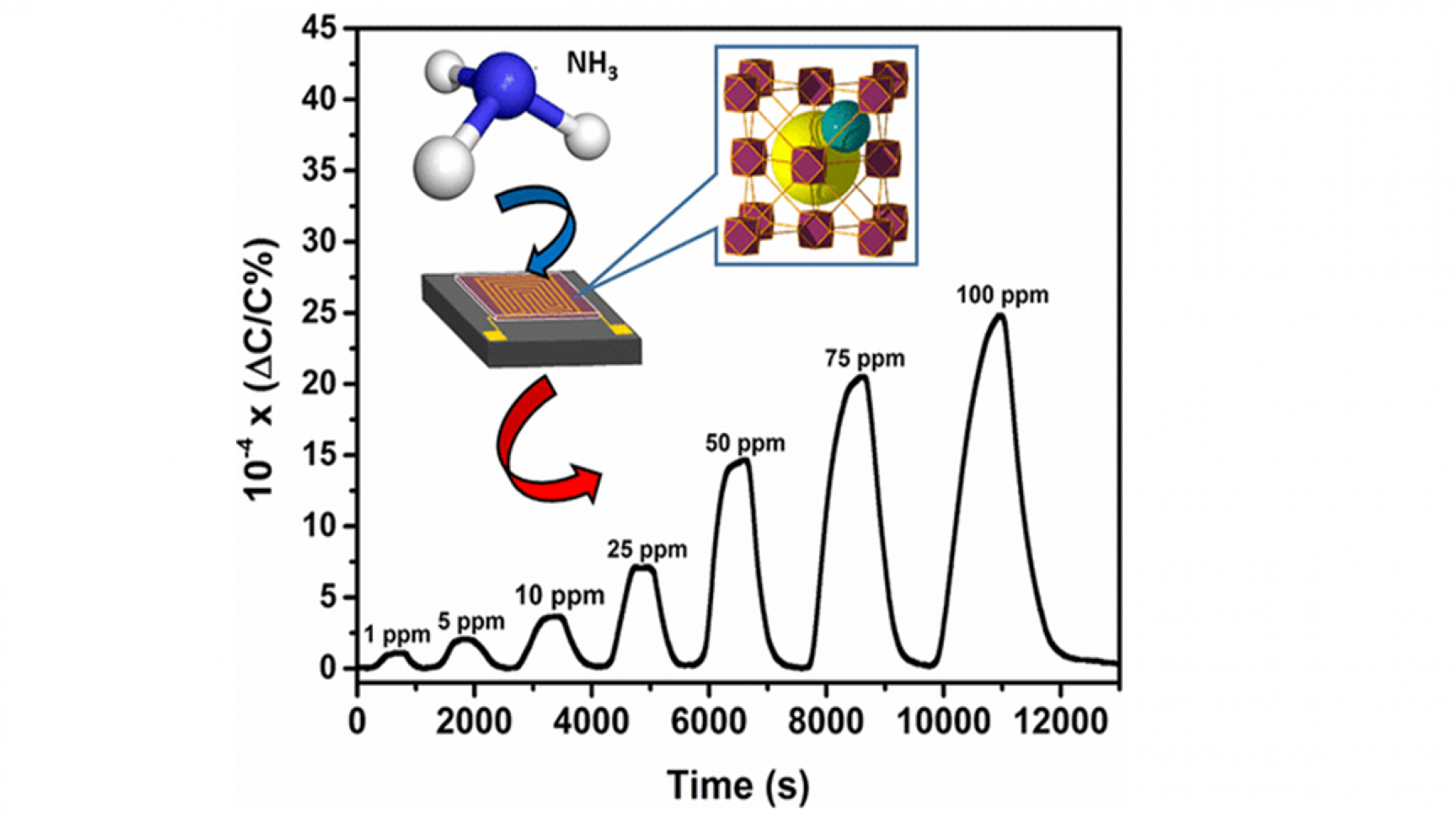Ayalew H. Assen, et al., " MOFs for the sensitive detection of ammonia: Deployment of fcu-MOF thin films as effective chemical capacitive sensors". ACS sensors, 2(9), 2017, 1294.
This work reports on the fabrication and deployment of a select metal–organic framework (MOF) thin film as an advanced chemical capacitive sensor for the sensing/detection of ammonia (NH3) at room temperature. Namely, the MOF thin film sensing layer consists of a rare-earth (RE) MOF (RE-fcu-MOF) deposited on a capacitive interdigitated electrode (IDE). Purposely, the chemically stable naphthalene-based RE-fcu-MOF (NDC-Y-fcu-MOF) was elected and prepared/arranged as a thin film on a prefunctionalized capacitive IDE via the solvothermal growth method. Unlike earlier realizations, the fabricated MOF-based sensor showed a notable detection sensitivity for NH3 at concentrations down to 1 ppm, with a detection limit appraised to be around 100 ppb (at room temperature) even in the presence of humidity and/or CO2. Distinctly, the NDC-Y-fcu-MOF based sensor exhibited the required stability to NH3, in contrast to other reported MOFs, and a remarkable detection selectivity toward NH3 vs CH4, NO2, H2, and C7H8. The NDC-Y-fcu-MOF based sensor exhibited excellent performance for sensing ammonia for simulated breathing system in the presence of the mixture of carbon dioxide and/or humidity (water vapor), with no major alteration in the detection signal.
